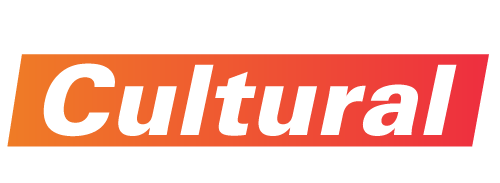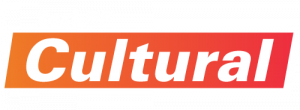Finance Strategists is a leading financial education organization that connects people with financial professionals, priding itself on providing accurate and reliable financial information to millions of readers each year. Our team of reviewers are established professionals with decades of experience in areas of personal finance and hold many advanced sales and use tax degrees and certifications. To conclude, the predetermined rate is helpful for making decisions, but other factors should be taken into consideration, too. While it may become more complex to have different rates for each department, it is still considered more accurate and helpful because the level of efficiency and precision increases.
Therefore, the predetermined overhead rate of GHJ Ltd for next year is expected to be $5,000 per machine hour. Overhead is the general term for costs a business pays other than the direct costs of producing a good or service. The production hasn’t taken place and is completely based on forecasts or previous accounting records, and the actual overheads incurred could turn out to be way different than the estimate. Different businesses have different ways of costing; some use the single rate, others use multiple rates, and the rest use activity-based costing.
An Alternative Approach Using Direct Cost
Let us take the example of ort GHJ Ltd which has prepared the budget for next year. The company estimates a gross profit of $100 million on total estimated revenue of $250 million. As per the budget, direct labor cost and raw material cost for the period is expected to be $40 million and $60 million respectively.
For example, the recipe for shea butter has easily identifiable quantities of shea nuts and other ingredients. Based on the manufacturing process, it is also easy to determine the direct labor cost. But determining the exact overhead costs is not easy, as the cost of electricity needed to dry, crush, and roast the nuts changes depending on the moisture content of the nuts upon arrival. Direct labor standard rate, machine hours standard rate, and direct labor hours standard rate are some methods of factory overhead absorption.
- Calculate the predetermined overhead rate of GHJ Ltd if the required machine hours for next year’s production is estimated to be 10,000 hours.
- Remember that product costs consist of direct materials, direct labor, and manufacturing overhead.
- All such information is provided solely for convenience purposes only and all users thereof should be guided accordingly.
- The cost of goods sold consists of direct materials of $3.50 per unit, direct labor of $10 per unit, and manufacturing overhead of $5.00 per unit.
Divide your total expenses for the plant by the total number of units you produce. Using the plantwide overhead rate formula, if expenses come to $10,000 for instance and you produce 2,500 units, $10,000 divided by 2,500 equals four. Enter the total manufacturing overhead cost and the estimated units of the allocation base for the period to determine the overhead rate. In these situations, a direct cost (labor) has been replaced by an overhead cost (e.g., depreciation on equipment). Because of this decrease in reliance on labor and/or changes in the types of production complexity and methods, the traditional method of overhead allocation becomes less effective in certain production environments.
A predetermined overhead rate is defined as the ratio of manufacturing overhead costs to the total units of allocation. A plant-wide overhead rate is often a single rate per hour or a percentage of some cost that is used to allocate or assign a company’s manufacturing overhead costs to the goods produced. The common allocation bases are direct labor hours, direct labor cost, machine hours, and direct materials. The concept of predetermined overhead rate is very important because it is used most of the enterprises as it enables them to estimate the approximate total cost of each job.
What are some common methods of factory overhead absorption?
This figure is your plant-wide indirect cost that you must pay just to be in business. All of your manufacturing activities depend on the services you are paying for throughout your plant. Hence, the overhead incurred in the actual production process will differ from this estimate. Divided into the overhead of $120,000, this comes to $48 in overhead per labor hour. Product A requires 1.5 hours per unit, so the overhead rate is 1.5 times $48, or $72 per unit. For product B, two labor hours are needed per unit, so the overhead per unit equals two times $48, or $96.
How Do You Determine a Product Cost in Managerial Accounting?
After reviewing the product cost and consulting with the marketing department, the sales prices were set. The sales price, cost of each product, and resulting gross profit are shown in Figure 6.6. A financial professional will offer guidance based on the information provided and offer a no-obligation call to better understand your situation. Unexpected expenses can be a result of a big difference between actual and estimated overheads.
Estimated Total Manufacturing Overhead Costs
Do not include wages for shipping personnel because you already included these in your direct costs for the entire plant. These include energy usage, wages for production and shipping personnel, and materials. Each product will use a different amount of these resources, but you can use a grand total for each direct cost as your plant-wide figure. Your indirect costs are those that continue no matter how much or how little you manufacture. These include things like rent or mortgage payments, insurance, equipment leases, and plant maintenance.
A predetermined overhead rate is calculated at the start of the accounting period by dividing the estimated manufacturing overhead by the estimated activity base. The predetermined overhead rate is then applied to production to facilitate determining a standard cost for a product. A predetermined overhead rate, also known as a plant-wide overhead rate, is a calculation used to determine how much of the total manufacturing overhead cost will be attributed to each unit of product manufactured.
Therefore, the predetermined overhead rate of TYC Ltd for the upcoming year is expected to be $320 per hour. Some small products may require large quantities, while complex projects may take longer to produce and therefore result in fewer units during any given period. Add up the total number of units you produce in a month regardless of which product it is. Small companies typically use activity-based costing, while large organizations will have departments that compute their own rates. You have to pay for personnel to do this checking, and in some cases you have to pay production personnel to fix the problem. In other cases, you may have to throw out defective products and write off the cost of making them.
Larger organizations employ different allocation bases for determining the predetermined overhead rate in each production department. However, in recent years the manufacturing operations have started to use machine hours more predominantly as the allocation base. To calculate the plantwide overhead rate, first divide total overhead by the number of direct labor hours used to find the overhead per labor hour. Next, multiply the overhead per labor hour by the number of labor hours used to produce each unit.
Ask a Financial Professional Any Question
Typically, a plantwide overhead rate assigns a cost figure based on the labor hours needed to produce one unit. For example, if overhead totals $75,000 for a month and direct costs equal $125,000, you have an overhead rate of 0.6 or 60 cents of overhead for every dollar of direct costs. Multiply the direct cost of one unit by 0.6 to find the amount of overhead you should allocate per unit. In this example, if the direct cost of one unit of a product is $80, multiplying $80 by 0.6 gives an overhead cost allocation of $48.

